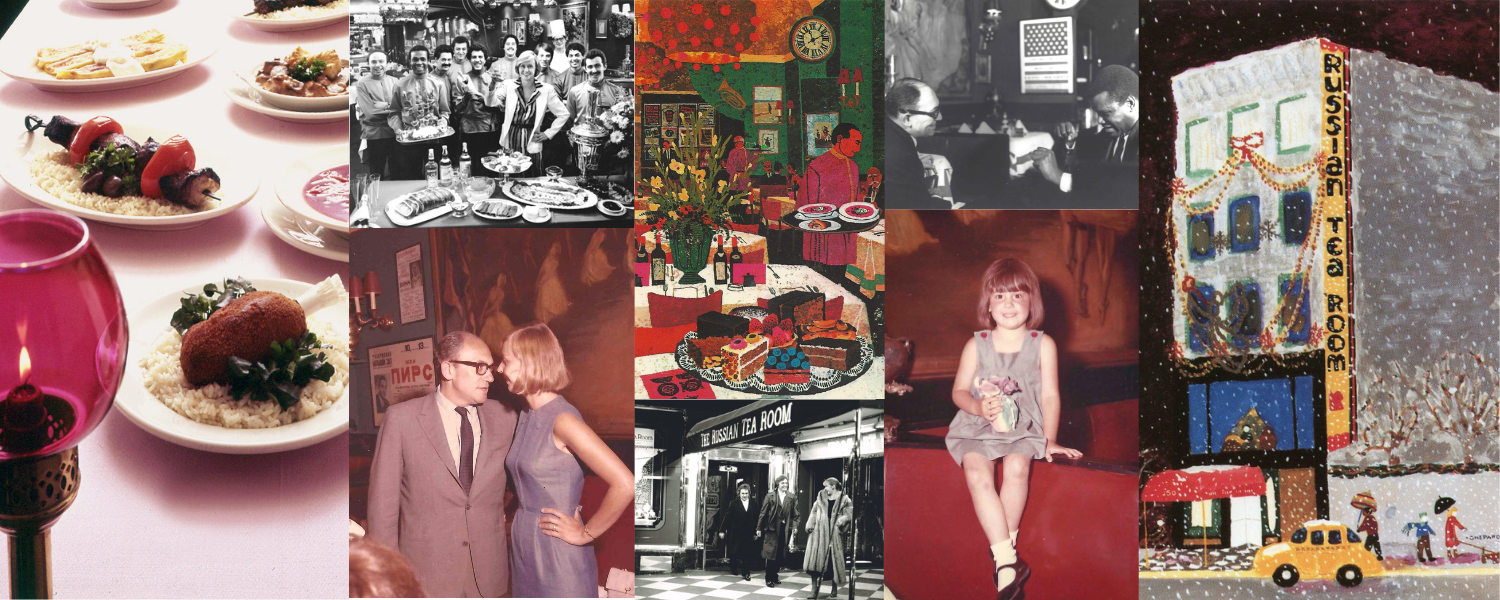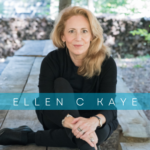
cruz defanti archive

Listen
My family once owned the Russian Tea Room on 57th Street in New York City next to Carnegie Hall. It was a quintessential New York watering hole. Full of characters. From the people who worked there to the movie stars, the theater legends, their agents and managers, the eclectic New Yorkers, tourists from all over America and all over the world. It was a fabulous, hilarious place.
My father Sidney Kaye owned it from 1947-1967. When he died my mother Faith Stewart-Gordon took over and ran it very successfully till 1996.
My earliest memories in my life are of the RTR, or the “ol’ watering hole” as my mother liked to call it. My father Sidney owned it and for the first seven years of my life it was my home away from home, across the street from our apartment. He died when I was seven and for me the restaurant became the embodiment of him. My mother took over the reins, and what my father had built, and took the place to a whole other level. She was a groundbreaking woman in a famously male dominated industry.
My memories are of a dazzling, whacky, red and gold swirling non-stop world with wonderful people rolling in and out every moment. That place held my heart. This song, “The RTR,” is an ode to those days, to that funny little building crammed into a hectic New York City street. A little building that seemed so much bigger than it was. Written partly through the eyes of a child, mostly through longing and remembrance of a golden place. Completely, as a loyal and devoted lover of all things deeply New York City. Especially the people who live in it.
- A Little Russian History.
The Russian people lived as serfs for thousands of years. In 1917 they overthrew the Czar, the king of Russia. The aristocrats of his empire who survived the violence of the Communist revolution, called by some the “White Russians,” fled to various parts of the world. Many of them landed in New York City. Not a few had hit financial hard times.
- A Little Russian Jewish History.
The Czars of Russia were not overly fond of the Russian Jewish people. The Czar sent his Cossacks, his horse guard, to beat and kill my ancestors in sweeping pogroms. My father’s people came here, fleeing from the murder and mayhem.
- A Little White Russians At The RTR History.
And then NYC being what it is, and life being what it is, the Czar’s relations ended up in our restaurant,The RTR, due to its Russian identity. And, what I’ve recently learned, is that the owners of the Tea Room before my father’s time were possibly “White Russians,” so that also explains their hanging hard at the Tea Room when my father took over.
According to family lore, there were a large group of them. They would descend on the banquets and while away the afternoons, ordering boiling water and supplying their own tea bags. My father would watch with growing anger and after a bunch of days would kick them all out screaming “get the hell out of my restaurant.” Time would pass and they would all return and the entire cycle would begin again. - A Little History Of The 1950’s Black List – Written by Alan Joseph
In 1941 the United States Congress, led by Montana Democratic Senator Burton Wheeler and North Dakota Republican Senator Gerald Nye led a Congressional investigation into Hollywood’s alleged role in promoting Soviet propaganda.
In 1947, the House Un-American Activities Committee (HUAC) began to investigate Hollywood as well.
During the 1950’s, Senator Joseph McCarthy, through the Senate Permanent Subcommittee On Investigations, joined in the fray alleging the existence of communists in the US Government and numerous institutions throughout the country. As a result of these investigations, over 200 actors, writers, and musicians were ultimately blacklisted from working in the entertainment industry.
Among those blacklisted were Pete Seeger, Harry Belafonte, Judy Holliday, Burl Ives, Artie Shaw, Lena Horne, Orson Welles, Elia Kazan, Charlie Chaplin, Burgess Meredith, Arthur Miller, Leonard Bernstein, and good friends of Sidney Kaye, the owner of The Russian Tea Room, Lee Grant and Zero Mostel.While not blacklisted themselves, Jerry Stiller and Anne Meara continued to work with blacklisted artists throughout that era.
Hollywood would strike back by making movies like “High Noon,” written by blacklisted screenwriter Carl Foreman, as an allegorical warning to those enforcing the blacklist and the people standing silently by allowing it to happen.

Listen

Listen
I hope people feel exhilarated listening to it. Inspired to find out more about who the people in their own lives are, living and dead. To think about how each person is an accumulation of knowledge, and you want to tap into it. You want to be the vessel too.
I feel deeply about the opening lyrics. I hope they resonate and make you think. Think about how each one of us is responsible for what happens in our own small world. No one can save us. We have to save ourselves, but wisdom, knowledge, it’s all around us and we can grab it, absorb it and become more than we thought possible. Riding on the shoulders of those who came before.
I love the music that Ethan wrote. It’s so strange to think something and then translate it into words and music with someone else. He has an extraordinary ability to take complicated thoughts and emotions and express them through the language of music.
And the genesis of this song, it’s odd really. We went down south to do some research and I saw my Confederate ancestors for the first time. In black and white photos of their blue and gray uniforms. I had seen their names before, but not their faces. And we wrote this song. Which isn’t about them at all. It’s the opposite. It’s about all the people who made me think the way I do, made me think in a way that could never understand, never forgive the horror of the Confederacy.






